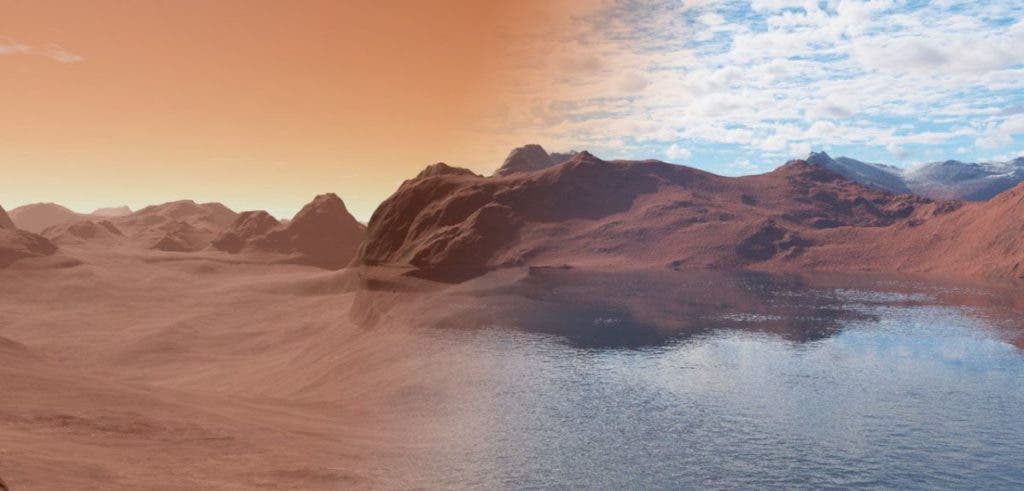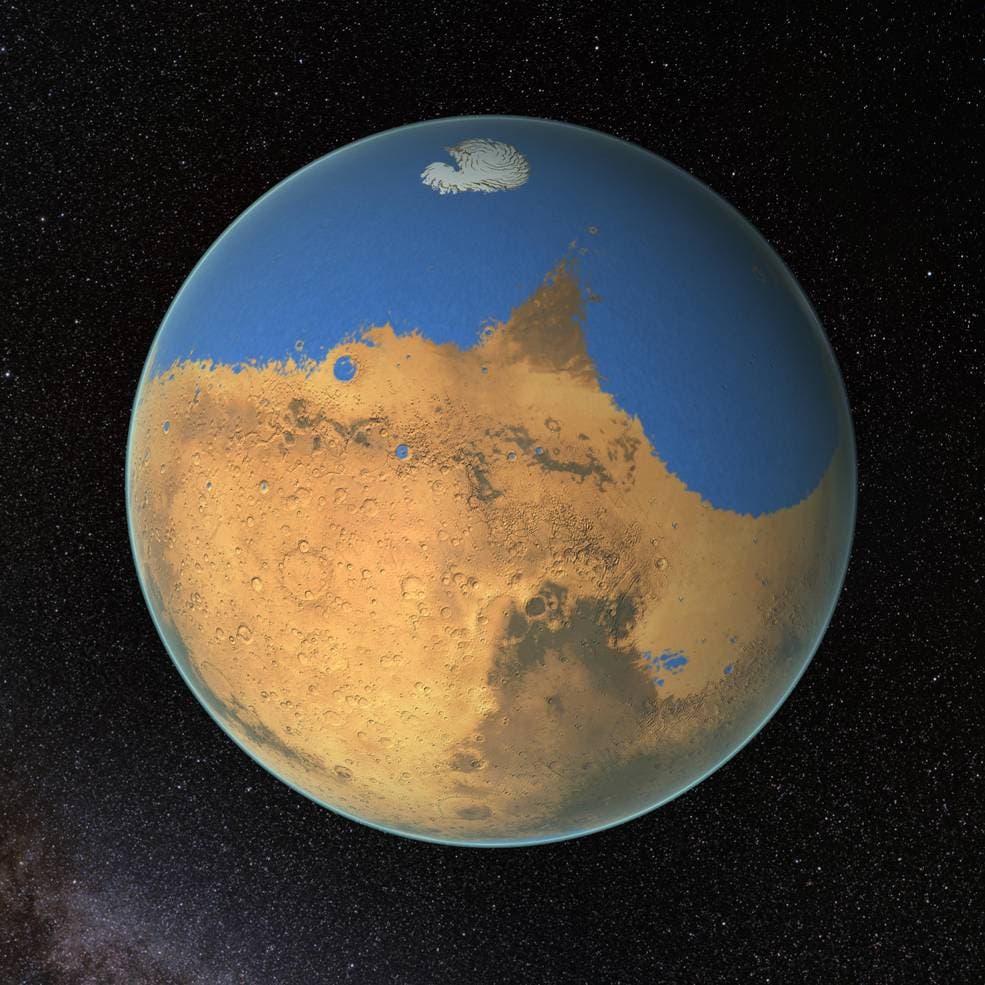
Scientists agree that Mars used to have water. Rivers, streams, lakes, even oceans seem to once have dotted the Martian landscape billions of years ago. But then it vanished — how and where it went being open questions among researchers. At least some of it escaped into space, then some more of it may have been boiled after the Red Planet lost its magnetic field. Now, an international team of researchers claims Martian water may have become trapped inside the planet’s mantle.
Not that dry after all — not beneath the surface at least
For their study, the team calculated the volume of water that the minerals comprising Mars’ crust could hold. The model, which computed water’s reaction with the crusts of early Earth and Mars, suggests that the Martian crust can trap twice as much water as Earth’s. Despite being a lot smaller than our planet, Mars’ mantle contains far more iron, which is prone to react with water. What’s more, Earth’s crust is more buoyant and warmer at greater depths than the Martian crust, preventing water from reacting within the mantle.
By running each model forward in time, the findings suggest that approximately 300 meters of surface water on Mars could have been absorbed into its crust and is now locked-up in microscopic mineral structures.
“Our calculations suggest that in excess of 9 percent by volume of the Martian mantle may contain hydrous mineral species as a consequence of surface reactions, compared to about 4 per cent by volume of Earth’s mantle,” the authors wrote in the journal Nature.

“People have thought about this question for a long time, but never tested the theory of the water being absorbed as a result of simple rock reactions,” said Jon Wade, a research fellow at the British Natural Environment Research Council at the University of Oxford. “Martian meteorites are chemically reduced compared to the surface rocks, and compositionally look very different. One reason for this, and why Mars lost all of its water, could be in its minerology.”
Besides what was absorbed by the crust, some if not most of Mars’ water must have escaped into space. About 3-4 billion years ago, the red planet boasted a hot climate that could sustain an active hydrological cycle. There were heavy rains, rivers of flowing waters, even vast oceans. All of these require a thick atmosphere, though, which the planet lost once its magnetosphere stopped functioning. With nothing to shelter it from cosmic rays and solar storms, the atmosphere thinned to the point that it’s now roughly 100 times less dense than Earth’s atmosphere.

All things considered, it seems like Mars never had a chance to keep liquid water on its surface as many forces converged to dry the planet.
“The public’s infatuation with finding life on Mars stems from the many characteristics both Earth and Mars share,” said study co-lead author Brendan Dyck, a researcher at Simon Fraser University. “Early on, both planets had similar potential to sustain life, but as time evolved, Mars lost its surface water along with its potential to sustain complex multi-cellular life.”
“It would be very difficult to sustain life as we know it on Mars even if surface water existed on the planet for a couple million years. Owing to the long time-scales of evolution, surface water would have to exist for billions of years before the evolution of complex multi-cellular life could take place.”






